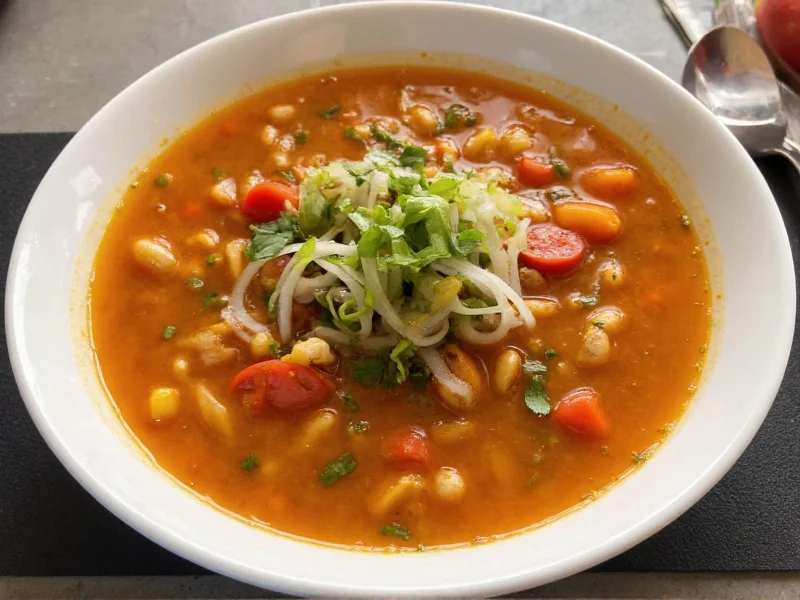Understanding how to effectively pair soups and salads transforms ordinary meals into culinary experiences that satisfy both nutritional requirements and taste preferences. This guide explores the art and science behind creating perfect soup and salad combinations that work harmoniously together.
The Culinary Logic Behind Soup and Salad Pairings
When considering soup r salads combinations, professional chefs and nutritionists emphasize three critical elements: temperature contrast, flavor profile alignment, and textural balance. These principles ensure your meal feels complete without overwhelming your palate.
Temperature contrast creates sensory interest—serving a warm soup alongside a cool salad provides a dynamic eating experience. Flavor profile alignment means matching intensity levels; a delicate consommé pairs better with a light vinaigrette-dressed salad than a robust blue cheese dressing. Textural balance ensures your meal isn't monotonous—creamy soups benefit from crunchy salad elements, while chunky soups pair well with smoother salad components.
Seasonal Pairing Strategies for Soup Salad Combinations
Successful soup r salads pairings evolve with the seasons, utilizing fresh, locally available ingredients that naturally complement each other. Understanding seasonal availability helps create meals that feel appropriate for the time of year while maximizing flavor and nutritional value.
| Season | Recommended Soup | Perfect Salad Match | Why This Combination Works |
|---|---|---|---|
| Spring | Asparagus soup | Pea shoot salad with lemon vinaigrette | Both showcase fresh, bright flavors with complementary earthy notes |
| Summer | Chilled cucumber soup | Tomato and watermelon salad | Cooling properties with hydrating ingredients perfect for warm weather |
| Fall | Roasted pumpkin soup | Kale salad with roasted apples and walnuts | Rich, earthy flavors with complementary sweet and savory elements |
| Winter | Hearty beef barley soup | Winter greens salad with pomegranate | Substantial soup balanced by a bright, acidic salad to cut through richness |
Nutritional Benefits of Thoughtful Soup Salad Pairings
When properly combined, soup r salads meals deliver exceptional nutritional value. Research shows that meals featuring both soup and salad increase vegetable consumption by 30% compared to single-component meals. The liquid component of soup promotes satiety while the raw elements in salad provide enzymes and nutrients that might be diminished through cooking.
Nutritionists recommend considering the glycemic impact when creating soup salad combinations. Pairing a starchy soup like potato leek with a high-fiber salad containing leafy greens and cruciferous vegetables helps moderate blood sugar response. Similarly, adding healthy fats to your salad (like avocado or olive oil) enhances absorption of fat-soluble vitamins from both components of the meal.
Avoiding Common Soup Salad Pairing Mistakes
Even experienced home cooks make mistakes when pairing soups and salads. The most frequent error involves flavor intensity mismatch—serving an intensely flavored soup like French onion with a delicate salad, or pairing a mild soup with an overpowering salad dressing.
Another common mistake is ignoring temperature dynamics. Serving both components at similar temperatures eliminates the sensory contrast that makes soup r salads combinations appealing. Similarly, overlooking textural harmony can create unpleasant eating experiences—pairing two creamy components or two overly crunchy elements fails to provide the mouthfeel variety that makes these meals satisfying.
Creating Balanced Soup Salad Meals for Special Dietary Needs
Dietary restrictions don't have to limit your soup r salads possibilities. For gluten-free diets, focus on naturally gluten-free bases like vegetable broths and legume-based soups paired with salads featuring quinoa or rice. Those following low-FODMAP diets can enjoy roasted vegetable soups with arugula salads dressed simply with olive oil.
Vegan and vegetarian pairings shine when considering protein completeness. Pairing a bean-based soup with a salad containing seeds or nuts creates a complete protein profile. For those managing sodium intake, homemade broths with herbs instead of salt paired with salads featuring citrus dressings offer flavorful options without excessive sodium.
Practical Tips for Everyday Soup Salad Combinations
Busy schedules don't have to prevent you from enjoying well-paired soup r salads meals. Batch cooking soups on weekends allows for quick assembly of balanced meals throughout the week. When short on time, consider these quick pairing solutions:
- Open a can of quality lentil soup and pair with pre-washed spring mix salad topped with sunflower seeds
- Use store-bought roasted vegetable soup with a simple arugula salad and lemon juice
- Transform leftover chili into a hearty soup component paired with a crisp coleslaw
Remember that the best soup salad combinations reflect your personal taste preferences while considering basic culinary principles. Don't be afraid to experiment with unconventional pairings—sometimes the most surprising combinations become your new favorites.











 浙公网安备
33010002000092号
浙公网安备
33010002000092号 浙B2-20120091-4
浙B2-20120091-4